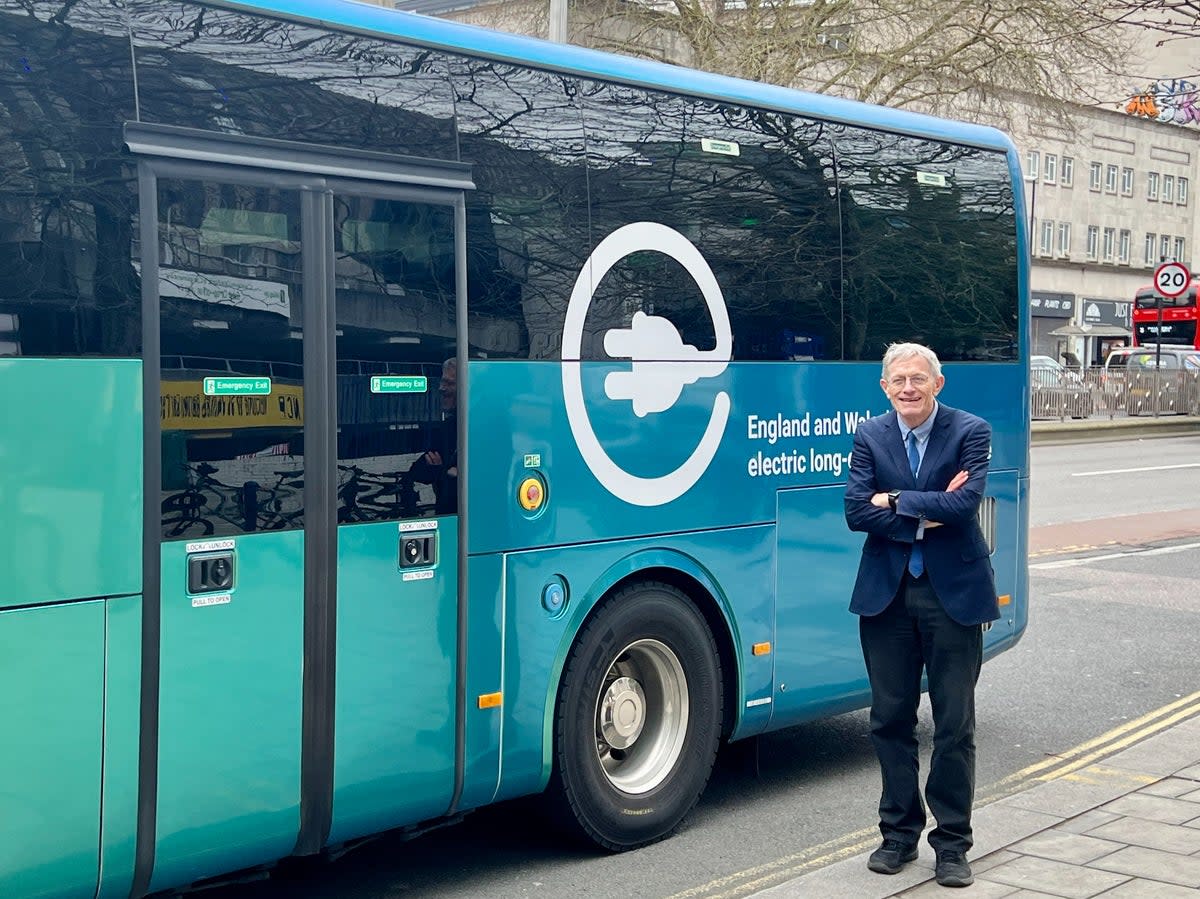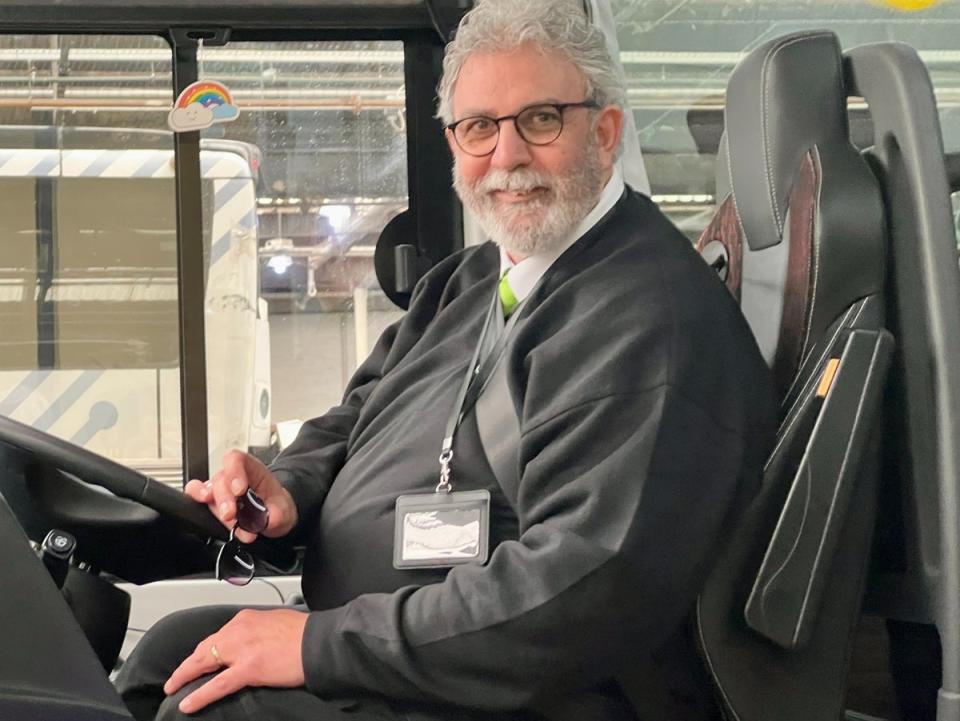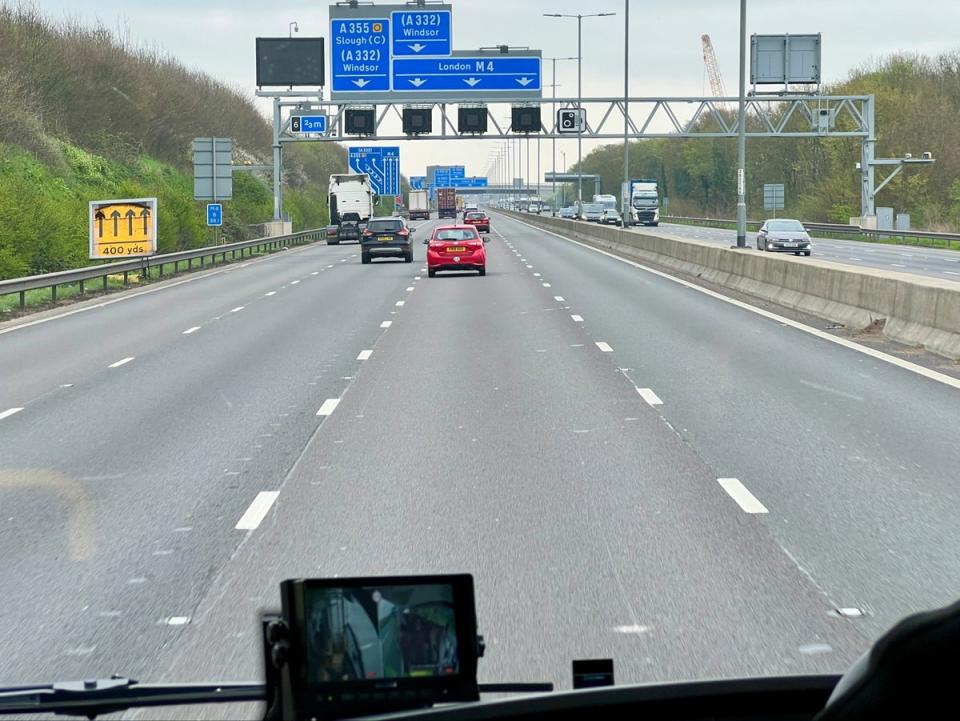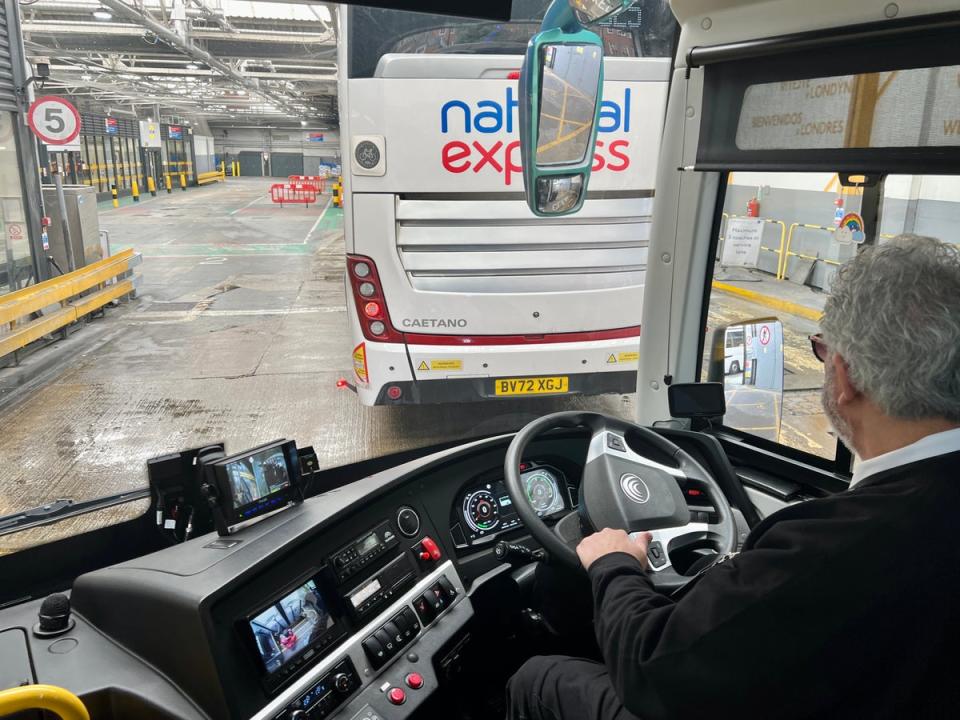Electric dream trip? The minute-by-minute record of a pioneering bus journey

- Oops!Something went wrong.Please try again later.
A quiet revolution in intercity travel began on Thursday morning, 21 March, with the first electric coach between London and Bristol, a distance of 120 miles. The FlixBus service is the only way to link the two cities on public transport with all-electric propulsion.
I booked two weeks ahead and paid £16.28 for the journey, compared with slightly more than twice as much for a train booked in advance. The “walk-up” rail fare, meanwhile, is £132.60 – over eight times more expensive.
But coaches do not have the best reputation for long-distance travel. Would the electric experience make a difference? I set off to find out.
This is how the journey unfolded.
8.20am: In central Bristol, across the road from an “adult entertainment store” named Prowler, a queue of sorts is forming. A smart and appropriately electric blue bus draws quietly into the layby: route 041E (the E stands for electric) from Bristol to London.
8.30am: After driver Francesco welcomes us on board, the UK’s first-ever long-distance electric coach glides away on schedule, destination Victoria Coach Station in central London.

8.31am: At the first set of traffic lights, the joy of electric coach travel begins to emerge at once. The difference with conventional buses is most evident when the coach is at a halt. Instead of the usual growling, vibrating diesel experience, the interior of the smart, Chinese-built Yutong bus is serene and still.
8.35am: Rush-hour traffic coming into Bristol is at a standstill, but leaving the city the M32 is flowing freely. The seats are comfortable, with a modest recline. I am sitting in 2C, next to James Cheung, an aerospace engineering student with a keen interest in sustainable transport.
8.38am: The 8.30am train from Bristol Temple Meads departs after being held up in Somerset earlier in the journey. Despite the £2.8bn spent on electrifying Brunel’s Great Western Railway – three times over budget – the first 25 miles from Bristol to Chippenham is still run on diesel engines. Network Rail has no firm plans to complete the line.
8.45pm: A handful of passengers board at a stop north of Bristol, serving the University of the West of England campus.
8.50am: The coach joins the M4: “London 112 miles,” reads a sign. Nothing more than a gentle purr from the engine.
9.10am: Time to count the passengers. Of the 46 seats, 33 are occupied; sadly two parents and their infant were turned away at Bristol due to not having a car seat. There is space for one wheelchair passenger.
9.30am: In Scotland, Ember’s regular Dundee-Edinburgh electric coach departs from the Tayside city to the capital. The UK’s first battery-powered bus service was launched in 2020 by this start-up company. Despite beginning in the first year of the Covid pandemic, the service has proved successful, offering approximately hourly departures day and night, and expanding to Glasgow.
9.35am: Passing Membury Services, the M4 motorway becomes misty – not serious fog, but a reminder that rail has a substantial safety edge over road travel. (FlixBus, with professional drivers, has an extremely good safety record.)
9.41am: Slowdown for the first significant roadworks, with three lanes reduced to two and a 40mph speed limit imposed for a contraflow.
9.49am: Passing the A34 junction north of Newbury, our coach is impertinently overtaken by a diesel-powered, acid-green FlixBus from Cardiff. London is 56 miles ahead.
9.56am: Motion sickness incident involving a small child.
9.59am: Nearing Reading, we pass the most philosophical signpost on the entire M4: “For the Oracle leave at Junction 11.”
10.11am: “No hard shoulder for 22 miles.” M4 expands from three to four lanes by dint of the hard shoulder being used as a running lane, into which Francesco tucks the bus. “London 34 miles.”

10.12am: The delayed GWR train from Bristol that was due to set off at the same time as our bus arrives at London Paddington. It has caught up a bit of time along the way and is only two minutes behind schedule.
10.27am: Here on the coach, the sun comes out for the first time just as we reach the Slough turn-off. Surely this can’t just be coincidence?
10.30am: Much of the traffic forsakes the M4 for the charms of the M25. Rather fewer vehicles join the final London-bound section of the M4. And a National Express coach, the 040, overtakes. It is a parallel service, with exactly the same departure and arrival times, but is pumping out fumes (as the vast majority of FlixBus, and for that matter Megabus coaches, also do).
Across at Heathrow, a mile to the south, parades of non-electric aircraft are arriving and departing.
10.38am: The Middlesex crawl, where the M4 shrinks from three to two lanes due to some disastrous 20th-century infrastructure planning. Oddly, I can briefly hop on to the wifi from the National Express coach, the promised service not materialising on FlixBus.
10.42am: Chiswick flyover. It’s not quite the entry of Christ into Jerusalem, but the view from up high near the front of the FlixBus is still impressive. The Shard punctures the horizon. “Central London 7” promises the sign as we descend to ground level.
10.46am: Hogarth Roundabout, home of the Fuller’s Brewery. No alcohol or smoking allowed aboard the FlixBus (or any other scheduled bus or coach in the UK).
10.52am: The Great West Road is not as great as it might be due to road works, but we still reach the drop-off point in Hammersmith eight minutes early. The battery still has 38 per cent left.
11.12am: Careless, inconsiderate and erratic: no, not me, but the drivers of west London with whom Francesco must guide his precious bus and its human cargo. Drivers of Tesla and BMW cars behave worst. Along Earl’s Court Road, the journey is made yet more exciting by some random parking by delivery vans.
11.20am: Unlike almost every other big city, London still has its main bus station in the city centre. On the final couple of miles to Victoria Coach Station, we join a stream of coaches along the Chelsea Embankment. An Uber boat cruises by, blissfully unaware of the congestion on the road.
11.28am: Outside the Army Museum on Royal Hospital Road, a camouflaged tank is pointing its gun at us. I am faintly surprised the government hasn’t weaponised this feature as part of Sadiq Khan’s alleged “war on motorists”.
11.30am: Pimlico Road is the great leveller: amid the antique shops, designer boutiques and delicatessens there is still (just) room for an electric FlixBus to squeeze through.

11.40am: After some congestion entering the arrivals terminal at Victoria Coach Station, we disembark 10 minutes late – but happy.
“Very pleasant, very quiet, smooth, and reliable,” concludes fellow passenger James Cheung. “A great way to travel between Bristol and London.”
Francesco must now take his coach south of the river to Battersea to plug in. On fast charge, the battery will be replenished within 90 minutes. He will command the return journey at 2.30pm.
Simon Calder, also known as The Man Who Pays His Way, has been writing about travel for The Independent since 1994. In his weekly opinion column, he explores a key travel issue – and what it means for you

